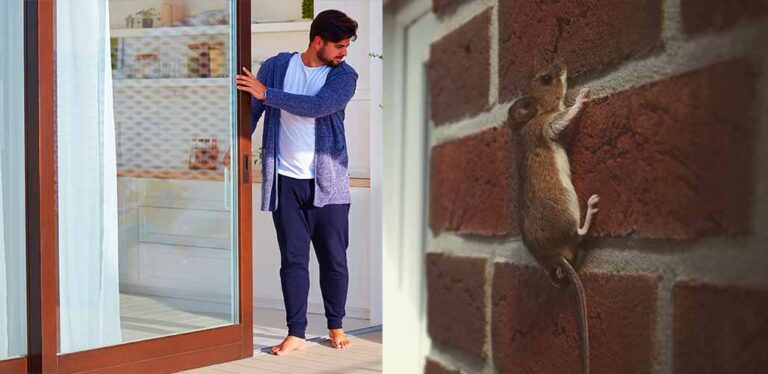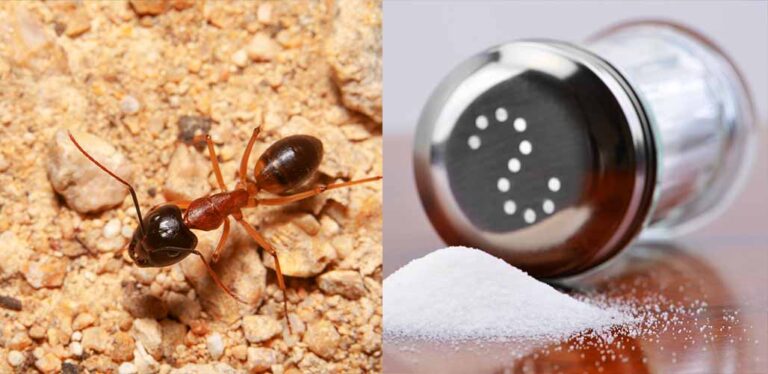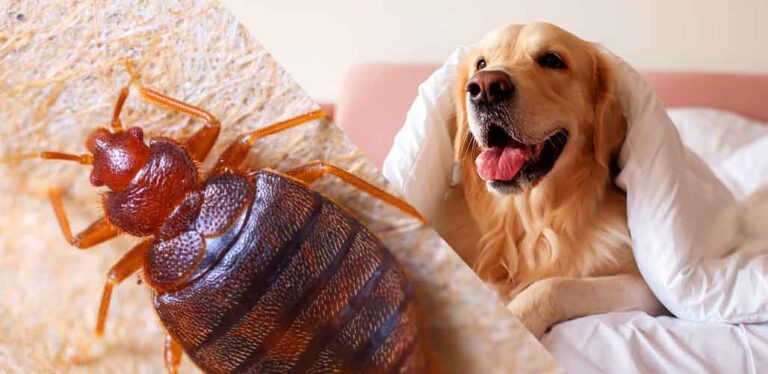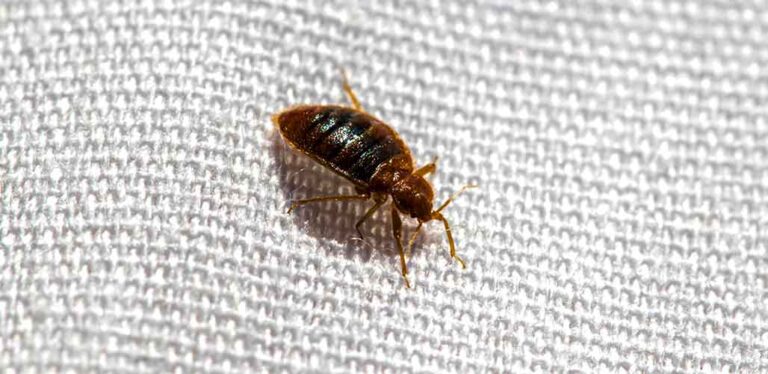Does Diatomaceous Earth Kill Springtails?
There are growing concerns about the use of chemicals in our homes and gardens. And many of us are looking for natural alternatives. Diatomaceous earth (DE) is a natural substance that has a wide range of applications and is popular with both gardeners and pet parents alike.
We’ll look at some of the claims for DE and at the evidence to support them. And we’ll look briefly at springtails themselves and at the damage, and the good, that they do.
Contents
- What is diatomaceous earth?
- What are springtails?
- Does diatomaceous earth kill springtails?
- Are springtails harmful?
- Best way to deal with springtails?
What Is Diatomaceous Earth?
Diatomaceous earth or DE for short, is a fascinating substance. It is composed of the tiny fossilized remains of ancient algae.
Over thousands of years these fossils have been compressed into a soft rock and this rock when powdered gives us the earthy substance we can buy in pet stores and from gardening suppliers.
What Is So Special About Diatomaceous Earth?
There are a couple of properties that have made diatomaceous earth popular. The first is that it is extremely porous. It can be used to absorb liquid spills for example.
More importantly, this porosity means that DE has the capacity to desiccate or dry out anything it comes into contact with. One study showed that DE controlled external parasites in chickens very effectively, and it did this by desiccating them.
The second feature of DE is that it is abrasive (it can be used in toothpaste for example). Both these features play a part in the action of DE on insects and insect-like arthropods.
But is there evidence to prove that DE works on these tiny creatures? Let’s have a quick look at springtails and find out what they do and what their vulnerabilities are.
What Are Springtails?
Springtails are small (less than a quarter of an inch long) insect-like creatures that often live in the upper layers of soil.
They love damp environments, have no wings, and use their tail to hop into the air when disturbed. It’s this hopping movement that sometimes causes them to be mistaken for fleas.
Springtails do not bite people and aren’t harmful, but if their presence builds up to large numbers, they may be considered a nuisance.
They sometimes infest pot plants, areas around leaky pipes, and may set up home anywhere that is constantly damp.
Does Diatomaceous Earth Kill Springtails?
Springtails thrive in a slightly moist environment. So anything that dries them out is likely to result in a reduction in their numbers. That includes diatomaceous earth.
And DE is great at absorbing moisture. Its abrasive qualities may also damage the outer surface of the springtail so that they lose moisture even more quickly.
Sprinkling diatomaceous earth around a leaky pipe or other damp area may help to tackle a springtail infestation in those areas too, though the better long term solution is probably to fix the leak!
The use of DE is also beneficial where pot plants have become infested with springtails. So what is it about these little creatures that we don’t like?
Are Springtails Pests?
Outdoors in their natural environment springtails can be a beneficial part of the ecosystem, feeding on decaying vegetation and not causing anyone a problem. It’s generally when they move indoors that springtails become an issue.
Although springtails like to live in soil, anywhere that is moist may be attractive to them, especially if the weather outdoors is very dry.
Numbers can build up in greenhouses or even in the home if there are damp areas. And most people who come into conflict with springtails do so because they have invaded their homes in large numbers.
The Best Way To Deal With Springtails
As with so many pests, the very best way to deal with springtails indoors is to make your home unattractive to them.
Improving ventilation so that condensation and damp does not build up indoors is important. Fixing leaky pipes is essential, and you may also find a dehumidifier is helpful.
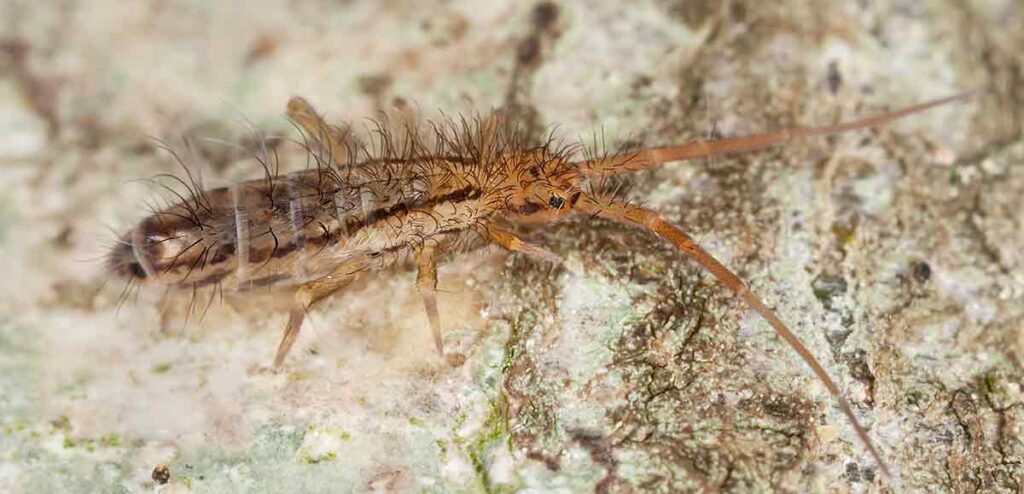
It’s also helpful to keep areas close to your house free from piles of leaves or rotting vegetation as these are the kinds of places that springtails like to live, and where numbers can quickly build up.
If you identify where little hopping bugs are entering your home you can sprinkle DE around them, but a more permanent solution of sealing cracks and gaps is a better long term plan.
Springtails In Pot Plants
Springtail build up in pot plants can be reduced by loosening the surface of the soil around the plant (use a kitchen fork) then sprinkling DE on the surface of the soil.
Over-watering plants can contribute to springtail build up so be careful to let the upper layers of soil to dry out a bit between watering.
Precautions To Take When Using DE
Just because something is natural, doesn’t mean it is harmless. Diatomaceous earth needs to be treated with caution. Its tiny particles can cause respiratory problems if inhaled so you need to be careful and protect yourself.
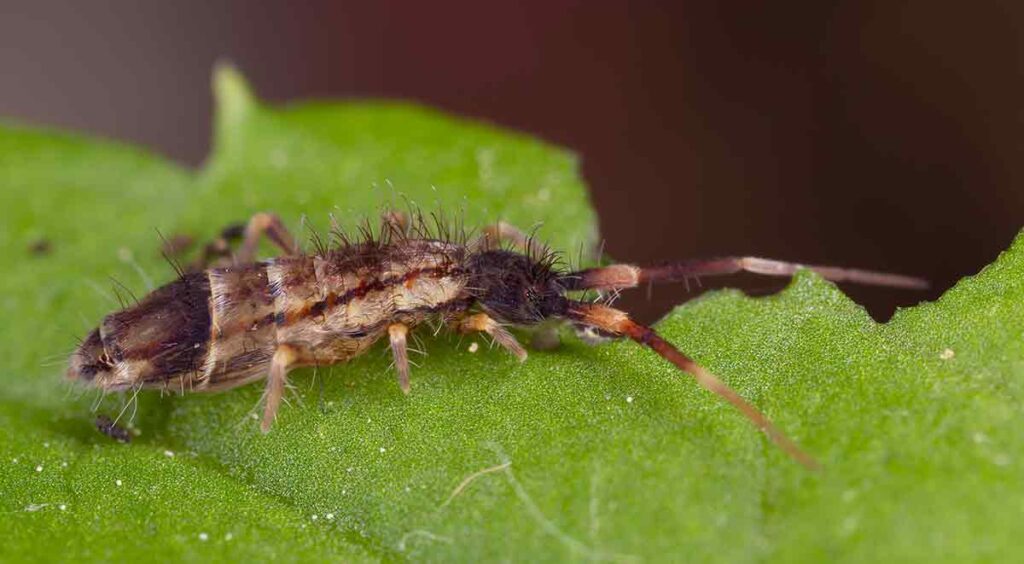
The Center For Disease Control provides information for those using DE and is updated regularly. It provides information about the type of facemask you should wear during application.
Diatomaceous Earth And Springtails
Springtails are not harmful to people but when they invade our homes in large numbers, most of us want to take action. Diatomaceous earth can help if you apply it to areas where springtails are gathering such as pot plants and damp places.
Reducing the humidity and moisture in your home, and removing harborage (the places that springtails like to hide outside it) should be your first line of defence. And will help to prevent the problem recurring in the future
If you’ve treated a springtail problem with diatomaceous earth we’d love to hear from you, so do drop a comment in the box below.


